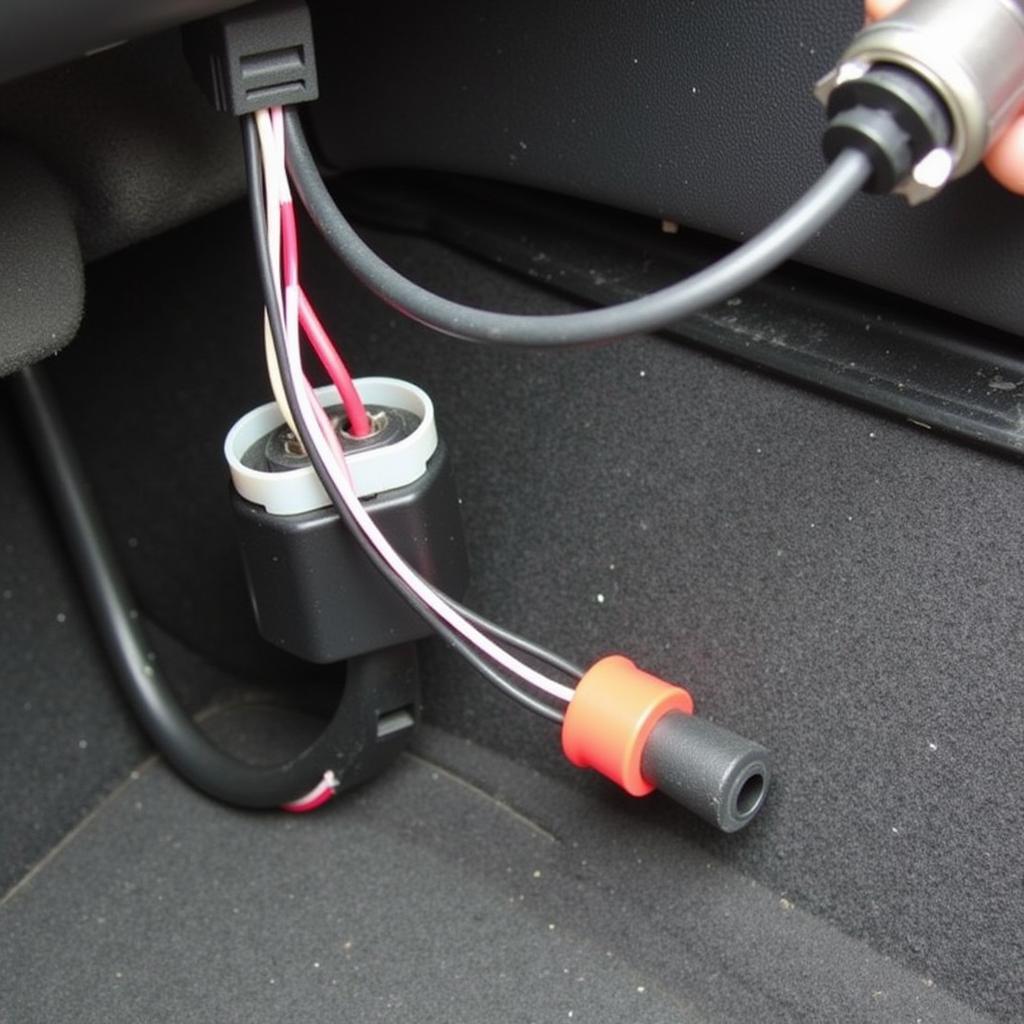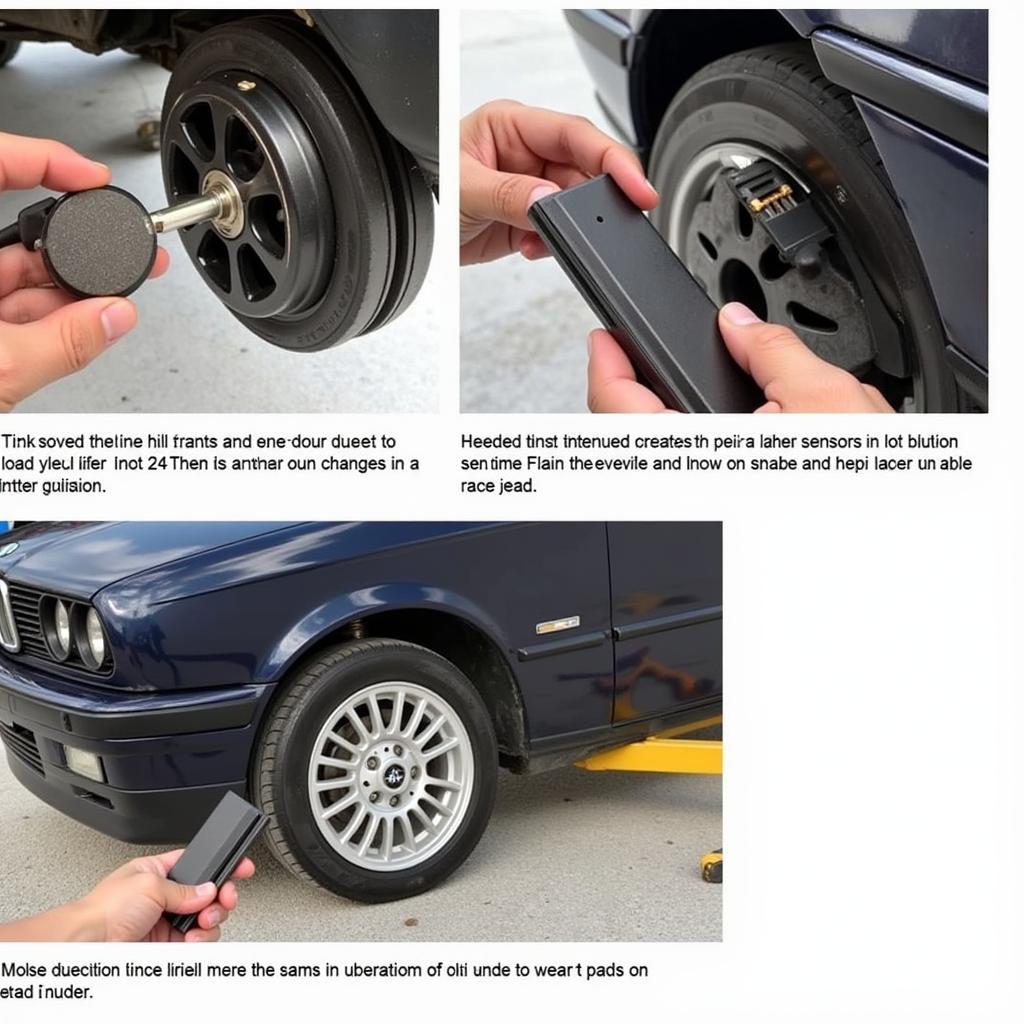Understanding car radio wiring harness colors is crucial for any car audio enthusiast or DIY mechanic. Whether you’re upgrading your car stereo, troubleshooting a faulty connection, or installing a new head unit, knowing the function of each wire in your harness is essential. This guide will provide a comprehensive overview of car radio wiring harness colors, helping you navigate the complexities of your car’s electrical system.
One of the first things you’ll encounter when working with a car radio is the wiring harness. This bundle of wires connects the car’s electrical system to the radio, providing power, ground, and connections for the speakers. Each wire in the harness has a specific color, indicating its function. Knowing these color codes can save you hours of frustration and prevent potentially damaging mistakes. panasonic 16-pin car stereo radio wire wiring harness
Why Are Car Radio Wiring Harness Colors Important?
Knowing the correct wiring harness colors is essential for a number of reasons. It ensures the proper functioning of your car stereo, avoiding potential damage to the unit or even the car’s electrical system. It also simplifies the installation process, making it quicker and more efficient.
Common Car Radio Wiring Harness Color Codes
While there are some standard color codes, it’s important to note that they can vary between car manufacturers and even specific models. Always consult your car’s wiring diagram or owner’s manual for the most accurate information. Some common color codes include:
- Yellow: Constant 12V power
- Red: Accessory 12V power (switched)
- Black: Ground
- Blue: Power antenna or amplifier remote turn-on
- Orange: Illumination (dims with headlights)
- Green: Left front speaker positive (+)
- White: Left front speaker negative (-)
- Purple: Right front speaker positive (+)
- Gray: Right front speaker negative (-)
Troubleshooting Car Radio Wiring Harness Issues
If you’re experiencing problems with your car radio, such as no power, poor sound quality, or flickering lights, the wiring harness could be the culprit. Here are some common issues and how to troubleshoot them:
- No Power: Check the fuse for the radio circuit. Also, verify that the yellow and red wires are connected correctly.
- Poor Sound Quality: Ensure the speaker wires are properly connected and that there are no loose or damaged wires. jvc car radio wiring color codes can help identify the speaker wires if you are working with a JVC head unit.
- Flickering Lights: This could indicate a problem with the orange illumination wire.
How to Identify Specific Car Radio Wire Functions?
If you’re unsure about the function of a specific wire in your car’s wiring harness, there are a few ways to identify it. A multimeter can be used to test the voltage and continuity of each wire. You can also consult your car’s wiring diagram or use an online resource like wiring car radio speakers.
“Knowing your car radio wiring harness colors is like having a roadmap to your car’s audio system,” says John Smith, a certified automotive electrician with over 20 years of experience. “It’s the key to a successful installation and can save you time and money in the long run.”
Working with Aftermarket Car Stereos
When installing an aftermarket car stereo, you’ll likely need to use a wiring harness adapter. This adapter connects the aftermarket stereo’s wiring harness to your car’s factory wiring harness, ensuring compatibility. It’s helpful to review guides like installing a kenwood car radio for specific brand instructions.
“Always double-check your connections before powering on the stereo,” advises Maria Garcia, an automotive electronics specialist. “A simple mistake can lead to serious damage.” Remember resources such as lincoln town car radio wiring diagrams are available online for specific makes and models.
In conclusion, understanding car radio wiring harness colors is fundamental for anyone working with car audio systems. Whether you are troubleshooting a problem or upgrading your stereo, having a firm grasp of the color codes and their corresponding functions will make the process smoother, safer, and more efficient. By following the tips and guidelines in this article, you can confidently navigate the complexities of your car’s wiring and enjoy a high-quality audio experience.


